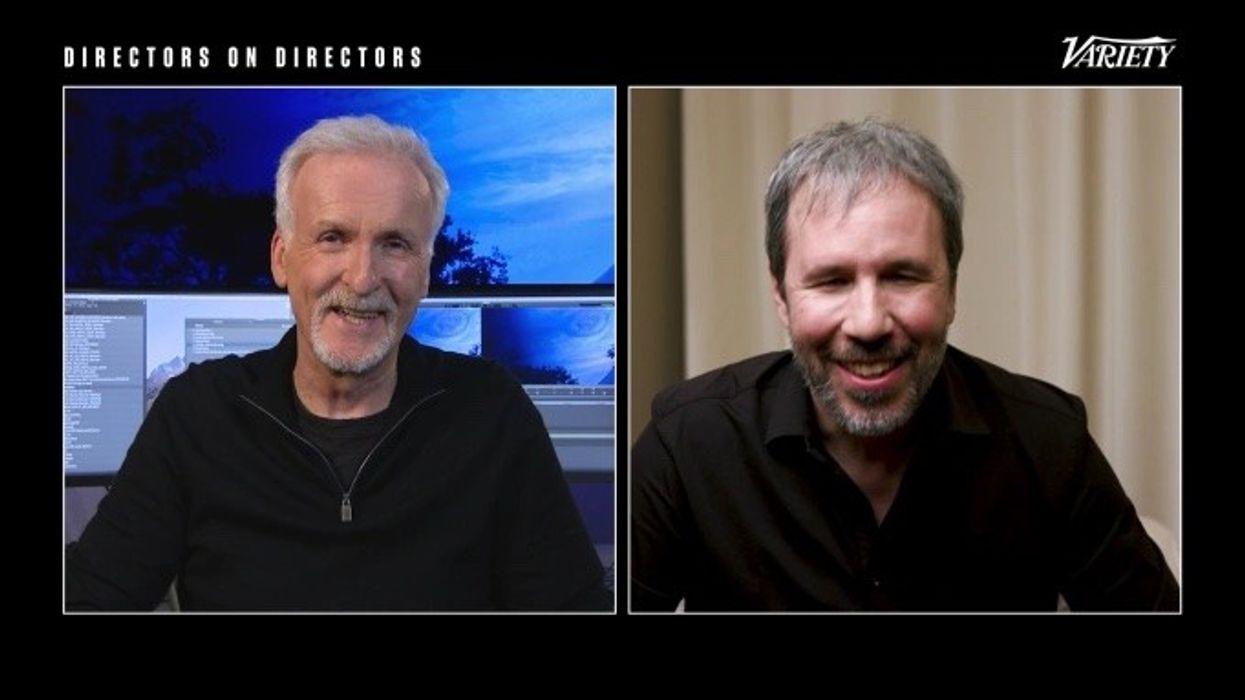James Cameron and Denis Villeneuve Tell You What Movies Look Like in the Future
How do two of the most celebrated filmmakers see the future of movies? Let's find out!

The world of filmmaking and watching is evolving. We can see it now as we watch the larger-than-life work of directors who take us to new worlds or the past, or how films are released on streaming services.
At the forefront of this conversation are two of our favorite filmmakers who are celebrated for their grounded interstellar worlds—Denis Villeneuve and James Cameron.
Both filmmakers, who have their eyes on the future of filmmaking and virtual visual language, sat down over Zoom to discuss and compare their philosophies behind worldbuilding and their predictions on how streaming will transform the industry.
Check out their full interview below!
The Approach to Worldbuilding
When approaching the desert planet of Arrakis, Villeneuve considered how the world would obey the laws of nature, gravity, aerodynamics, and physics. Villeneuve said, “I tried at my best to put the ecosystems in the center of the project. It will feel [like] everything has been influenced by biology, by nature.”
Luckily for Villeneuve, Frank Herbert’s novel provided many notes of the ecology, culture, and interstellar economy, which he and his team used as their gospel.
Dune may be fantasy, but bringing science into the world made Arrakis feel like a real place.
Cameron described Villeneuve’s world as a true epic, “meaning like a David Lean film, or to a very large extent like the Lord of the Ringsfilms. But when I think of films that have epic events in them like, let’s say a Marvel Universe film, where whole cities get destroyed… they don’t feel epic to me.”
Like Villeneuve, Cameron created his virtualworld of Pandora in his Avatarseries by blending visual effects through in-camera visual tricks.
Cameron started with all in-camera sets and tricks, making “an aesthetic discipline out of that,” said Cameron. “If I hadn’t done that, I don’t think I could do all the virtual stuff now.”
To start building Pandora, Cameron assembles the best team of designers, then creates a virtual environment like a video game that can be viewed through a Simulcam which allows him to view the world on set and move the landscape to fit his desires.
The Simulcam allows Cameron to look through the live-action camera to see those set extensions automatically in real-time. Cameron believes that “the Simulcam stuff I think could be applied to any imaginative film that requires something there beyond the live-action.”
'Avatar 2'Credit: 20th Century Fox
Touches of Everyday Life
While Cameron’s and Villeneuve’s worlds look different, they are both reaching for touches of “everyday reality in the human environment.”
Villeneuve's touches work with the subconscious, tricking the audience’s mind with everyday occurrences in foreign objects like spaceships or the Shai-Hulud, Dune’s sandworms.
The Shai-Hulud are worshiped as a deity by the Fremen in the novel, and Villeneuve honored this through the visual language of the sandworms' link with the world.
“Everything is centered on that figure of the worm…The main idea was to try to create an animal that needs to survive in the toughest, roughest, environment,” he said.
Cameron’s touches of humanity are in the practical camera angles.
“I think the classic mistake that people make when they’re using CG for a helicopter scene is they’ll have the helicopter come right by the lens,” Cameron said. “Anybody that’s ever shot air-to-air knows you can’t do that.”

A Miracle Moment
The main characters in both of the acclaimed directors' magnificent worlds have a "miracle moment" that is both scientifically explained and spiritual.
Whether or not the audience interprets the moment spiritually or religiously, Cameron believes the idea doesn’t require any explanation if the moment is executed well. He finds himself drawing on spiritual themes while trying to convince himself that he doesn’t believe in the supernatural.
It boils down to learning how nature works in ways that are beyond our understanding.
As Cameron states so clearly, “Nature is so vast. Nature’s a miracle.”
'Avatar'Credit: 20th Century Fox
A Future with Streaming
As the streaming war rages on, many filmmakers fear where this could take the cinematic experience.
But what is cinema? For Villeneuve, it is all about capturing images.
“It’s something that can be done in different sizes of screen," he said. "My problem is the danger of making movies that are built like a franchise that brings the language of cinema to the structure of television… I’m talking about the language.”
As for Cameron, the possibilities with streaming are endless. Instead of being limited to a runtime, filmmakers can make movies that are six hours long and two and half hours long.
“You can stream it for six hours, or you can go and have a more condensed, roller coaster, immersive version of that experience in a movie theater,” he said.

The streaming platforms have to be used to push the boundaries of filmmaking and the traditional viewing experience. Do you think Zach Snyder could have released The Snyder Cut in theaters? Not with that four-hour run time.
The movie-watching experience may not be the same at home, but it allows filmmakers—low-budget to big-budget—to create and evolve the world of filmmaking. Be creative and bold when approaching your next ambitious project.
What are your thoughts on Villeneuve and Cameron’s discussion? Let us know in the comments!
Source: Variety













